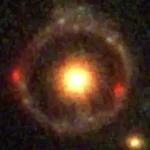Key Takeaways:
- Comet 2I/Borisov is the second interstellar object to pass through our solar system, following ‘Oumuamua in 2017.
- Discovered by amateur astronomer Gennady Borisov, researchers have now traced its origin to a binary red dwarf star system, Kruger 60, 13.15 light-years away.
- Rewinding Borisov’s path reveals it passed within 5.7 light-years of Kruger 60, suggesting it may have originated from there.
- This discovery offers a rare opportunity to study distant solar systems and potentially learn about Kruger 60, a star system with no known exoplanets.
- While the findings are intriguing, scientists caution that further data collection is needed to confirm the comet’s origin definitively.
In a groundbreaking discovery, astronomers have unraveled the enigmatic origins of the second interstellar visitor to our solar system, Comet 2I/Borisov. This celestial nomad was first spotted by amateur astronomer Gennady Borisov in Crimea, marking the first interstellar guest since the peculiar ‘Oumuamua traversed our cosmic neighborhood in 2017.
Now, a team of Polish researchers has charted the comet’s trajectory, leading them back to a binary red dwarf star system named Kruger 60, situated a staggering 13.15 light-years away.
Tracing Comet Borisov’s cosmic journey, scientists found that approximately one million years ago, it ventured within a mere 5.7 light-years of Kruger 60’s center, hurtling at a speed comparable to that of the fastest human-made aircraft, the X-43A Scramjet. However, this velocity proved insufficient to overcome the sun’s gravitational pull, implying that Kruger 60 might be its ancestral star system. It’s plausible that Comet Borisov once danced in orbit around those distant stars, mirroring the comets that grace our own solar system.
The evidence linking Comet 2I/Borisov to Kruger 60 appears robust based on available data. Ye Quanzhi, an astronomer at the University of Maryland, emphasized two critical considerations for establishing an object’s interstellar origins.
Firstly, examining if the comet had a close encounter with a planetary system, indicating a potential point of origin. While 5.7 light-years may seem vast in human terms, in the realm of cosmic distances, it’s a remarkably proximate approach.
Secondly, comets are often propelled out of planetary systems due to gravitational interactions with massive planets. This ejection velocity has an upper limit determined by the planet’s mass. The researchers demonstrated that Comet 2I/Borisov’s speed and proximity to Kruger 60 fall within this range, lending credence to the hypothesis of its extraterrestrial lineage.
Studying interstellar comets like Borisov presents a unique opportunity to scrutinize distant solar systems, employing the same tools scientists use to explore our own. Telescopes can potentially unveil intricate details of Borisov’s surface, shedding light on its behavior, which thus far appears consistent with comets from our system. This research not only promises insights into Comet Borisov but also offers a window into Kruger 60, a nearby star system that remains unexplored in terms of exoplanets.
Unlike ‘Oumuamua, which seemed to come from the vicinity of the star Vega, Comet Borisov’s trail leads back to Kruger 60. This could signify a historic breakthrough, marking the first time an interstellar object has been unequivocally linked to its home system. Nevertheless, the researchers exercise caution, emphasizing the need for additional data to validate their findings.
While the paper detailing the comet’s origin has yet to undergo peer review, it is available for scrutiny on the preprint server arXiv. This revelation not only expands our understanding of interstellar visitors but also underscores the immense potential for unraveling cosmic mysteries lurking within our celestial neighborhood.


